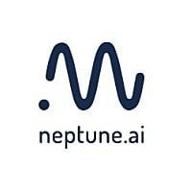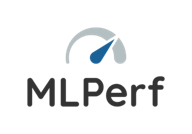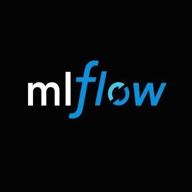Внедрение машинного обучения
Streamlining Machine Learning Operationalization: Automating Model Deployment and Monitoring
In the realm of Artificial Intelligence (AI) and Machine Learning (ML), operationalizing algorithms is a crucial aspect of successful implementation. As organizations embrace the power of AI, automating model deployment and monitoring in AI systems becomes paramount. This article delves into the significance of automating these processes, while addressing the challenges faced, securing AI infrastructure for production deployment, and highlighting best practices for deploying machine learning models.
Challenges in Operationalizing Machine Learning Algorithms
Operationalizing machine learning algorithms involves transitioning from a development environment to a production-ready state. This transition poses various challenges that organizations must overcome to ensure the successful deployment and operation of ML models. Challenges may arise from managing data pipelines, feature engineering, model versioning, and addressing performance discrepancies between development and production environments. Moreover, the need to handle real-time data, accommodate scalability requirements, and maintain model fairness and interpretability further compound the operationalization process.
Securing AI Infrastructure for Production Deployment
Securing the AI infrastructure is a critical consideration when deploying machine learning models in production. With sensitive data and powerful algorithms at play, organizations must implement robust security measures to protect against data breaches and ensure compliance with privacy regulations. This involves implementing access controls, encryption mechanisms, and auditing capabilities to safeguard data integrity and confidentiality. Additionally, organizations must regularly patch and update software components to protect against emerging security vulnerabilities.
Best Practices for Deploying Machine Learning Models
Deploying machine learning models requires a systematic approach to ensure smooth integration into production systems. Adopting best practices streamlines the deployment process and maximizes the efficiency and effectiveness of AI systems. It involves comprehensive testing and validation procedures, including rigorous unit testing, integration testing, and performance testing. Furthermore, organizations should embrace containerization and orchestration technologies, such as Docker and Kubernetes, to facilitate seamless deployment and management of ML models across different environments. Version control, documentation, and collaboration among teams are also essential for maintaining transparency and repeatability in the deployment process.
Automating Model Deployment and Monitoring in AI Systems
To overcome the challenges associated with operationalizing machine learning algorithms, organizations are increasingly turning to automation. Automating model deployment and monitoring streamlines the process, reduces manual intervention, and improves overall efficiency. This involves leveraging DevOps practices and tools to automate the provisioning of infrastructure, the deployment of models, and the configuration of monitoring and alerting systems. By adopting continuous integration and continuous deployment (CI/CD) pipelines, organizations can achieve faster and more reliable model deployments while ensuring close monitoring of model performance, data drift, and system health.
In conclusion, the operationalization of machine learning algorithms plays a vital role in the successful implementation of AI systems. By automating model deployment and monitoring, addressing challenges, securing AI infrastructure, and following best practices, organizations can unlock the full potential of machine learning in production environments. Embracing these principles and integrating them into the AI development lifecycle will pave the way for organizations to deliver robust, scalable, and secure AI solutions that drive innovation and business growth.


1 Отзыв


1 Отзыв
5Analytics helps enable companies to integrate, deploy and monitor their machine learning in a scalable, repeatable manner.


1 Отзыв
Datmo enables continuous delivery for data science. Experiment, scale, and deploy without leaving your familiar workflows and deliver results in a fraction of the time.


1 Отзыв
Datatron's platform is vendor, language, and framework agnostic. The hard work begins when your models go into production.


1 Отзыв
The most lightweight experiment management tool that fits any workflow Use as a service or deploy on any cloud or your own hardware.


1 Отзыв
A broad ML benchmark suite for measuring performance of ML software frameworks, ML hardware accelerators, and ML cloud platforms.


1 Отзыв
ParallelM's MCenter helps Data Scientists deploy, manage and govern ML models in production. Just import your existing model from your favorite notebook and then create data connections or a REST endpoint for model serving with the drag-and-drop pipeline builder. Advanced monitoring automatically creates alerts when models are not operating as expected…
Узнайте больше об этой компании

1 Отзыв
Numericcal provides tools to help you reach your implementation goals quickly and effortlessly.


1 Отзыв
MLflow (currently in beta) is an open source platform to manage the ML lifecycle, including experimentation, reproducibility and deployment.
- Программное обеспечение для операционализации машинного обучения относится к специализированному набору инструментов и платформ, предназначенных для облегчения развертывания, управления и мониторинга моделей машинного обучения в производственных средах. Он предлагает функции, которые автоматизируют различные аспекты реализации алгоритмов машинного обучения, включая развертывание моделей, управление версиями, масштабируемость, интеграцию данных и мониторинг производительности.
- Использование программного обеспечения для операционализации машинного обучения дает несколько преимуществ. Он оптимизирует процесс развертывания, сокращая объем ручных операций и повышая эффективность. Он обеспечивает плавную интеграцию моделей машинного обучения в производственные системы, обеспечивая стабильную и надежную работу. Программное обеспечение также предлагает возможности для автоматизации таких задач, как предварительная обработка данных, разработка функций и мониторинг моделей, что повышает общую производительность и ускоряет вывод приложений ИИ на рынок.
- При оценке программного обеспечения для операционализации машинного обучения важно учитывать некоторые ключевые функции. Ищите инструменты, которые предлагают простое развертывание моделей и управление ими, поддержку различных платформ машинного обучения, масштабируемость для обработки больших объемов данных и одновременных запросов, надежные возможности мониторинга и оповещения, контроль версий для моделей, эффективное использование ресурсов и интеграцию с существующей инфраструктурой и данными. системы. Кроме того, такие функции, как автоматическая предварительная обработка данных, переобучение моделей и поддержка совместной работы, могут еще больше улучшить процесс операционализации.
- Да, программное обеспечение для операционализации машинного обучения предназначено для совместимости с широким спектром моделей машинного обучения. Он поддерживает различные типы моделей, включая обучение с учителем, обучение без учителя, обучение с подкреплением и модели глубокого обучения. Независимо от того, работаете ли вы с классификацией изображений, обработкой естественного языка, обнаружением аномалий или любой другой задачей машинного обучения, программное обеспечение предоставляет необходимую инфраструктуру и инструменты для операционализации и развертывания ваших моделей в производственной среде.

